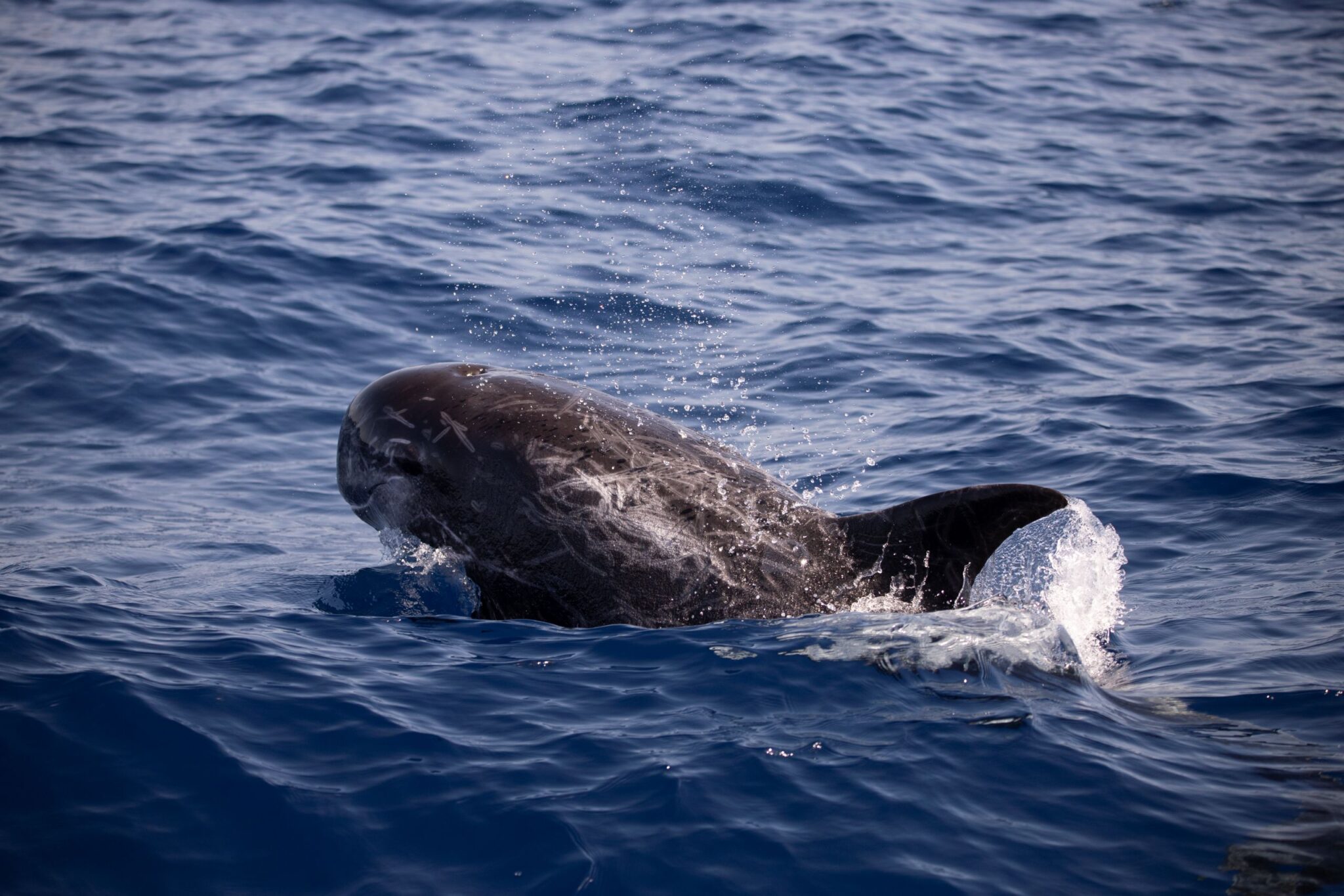
Abandoned young Risso’s dolphin near Lastovo
In recent days, the public has been reacting to the...
18.09.2025
The loggerhead sea turtle (Caretta caretta) is a cosmopolitan species inhabiting the entire Mediterranean Sea and the Adriatic. In the Mediterranean, loggerhead turtles mainly nest in the eastern basin, with the main nesting areas in Greece, Turkey, and Cyprus. In Greece, the main nesting grounds are located in the Ionian Sea, and two colonies – in Kyparissia Bay and on Zakynthos – are the largest in the Mediterranean. Research on migration routes and DNA analysis has shown that most loggerheads residing and growing up in the (northern) Adriatic belong to the nesting population from those locations in Greece.
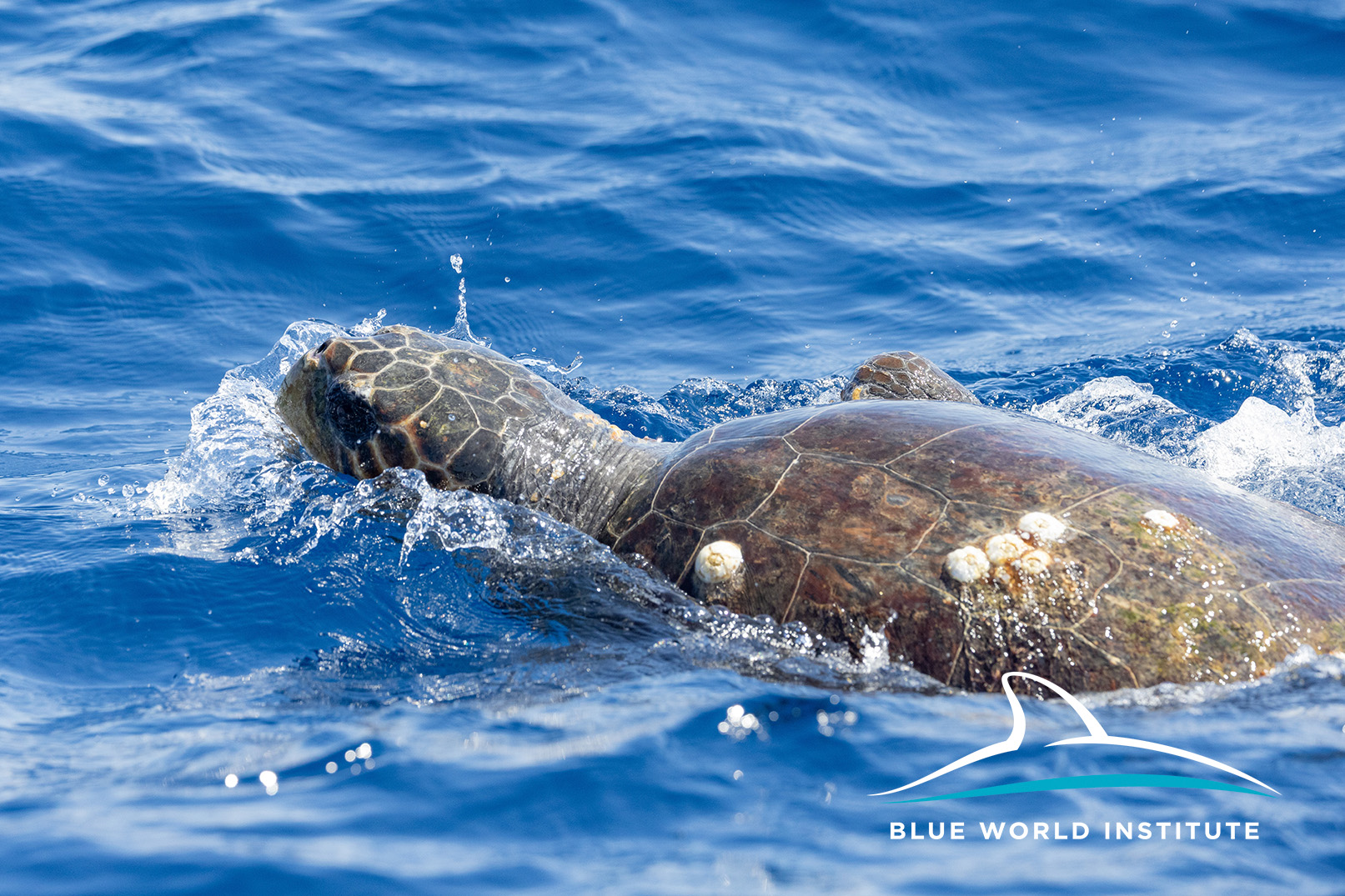
Loggerhead turtle (Caretta caretta)
Unlike the Ionian Sea, nesting in the Adriatic has so far been rare, mainly in southern Italy. However, in recent years, loggerhead nests have started to appear more frequently: an increasing number of nests have been recorded in Albania (Durrës, Vlora), Montenegro (St. Stefan, Ulcinj), and Italy (Manfredonia, Rimini, Venice). At the same time, the nest discovered near Venice represents the northernmost recorded loggerhead nesting site.
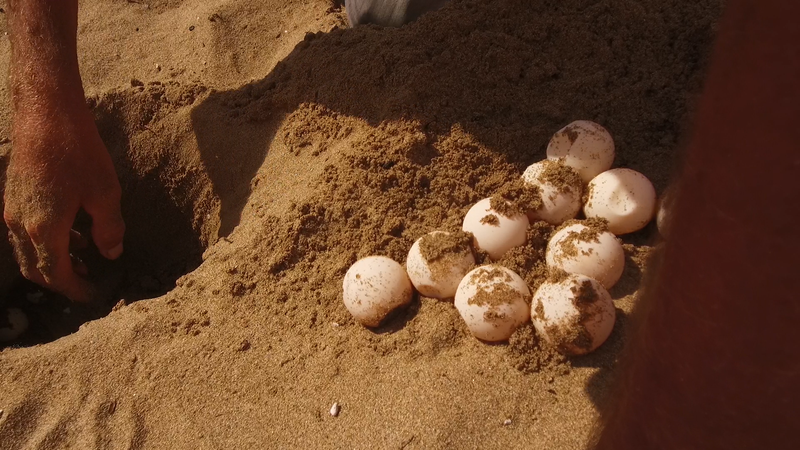
Green turtle eggs on a nesting site in Cyprus
In Croatia, sea turtle research began in the 1990s at the Croatian Natural History Museum (CNHM) through the Sea Turtle Research Program, led by Prof. Dr. Bojan Lazar. All data collected since then have anecdotally confirmed the presence of small turtles. However, although almost all potential nesting sites on Adriatic beaches have been surveyed and documented, evidence of loggerhead nesting in Croatia did not exist until now. Still, given the increasing number of nests in the Adriatic, we considered it only a matter of time before one would appear here as well.
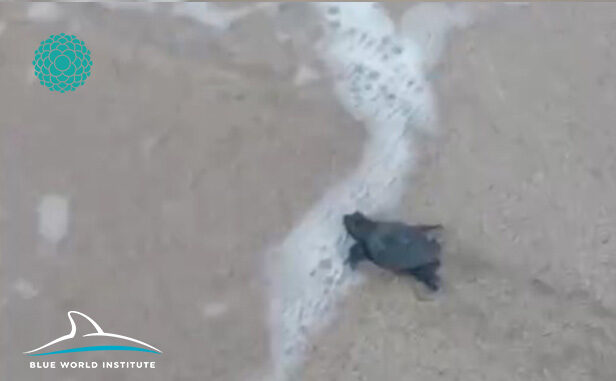
Footage of the first sighting of loggerhead turtle hatchlings on Pržina Beach
On September 10, 2025, during a walk on Pržina Beach in Lumbarda on the island of Korčula, Mr. Branko Ćeran noticed about 15 small turtles heading toward the sea. Although surprised, Mr. Branko reacted appropriately, recorded them, and submitted the video to colleagues at the CNHM. This became the first documented loggerhead turtle nesting in Croatia!
Since the nesting season was coming to an end and the sand temperature was no longer high, the hatchlings emerged around 3 p.m., which is unusual. Normally, they leave the nest at night or early in the morning to avoid predators and high temperatures. Rain and waves did not stop them on their way to the sea, and within about 10 minutes they had all disappeared from the beach.
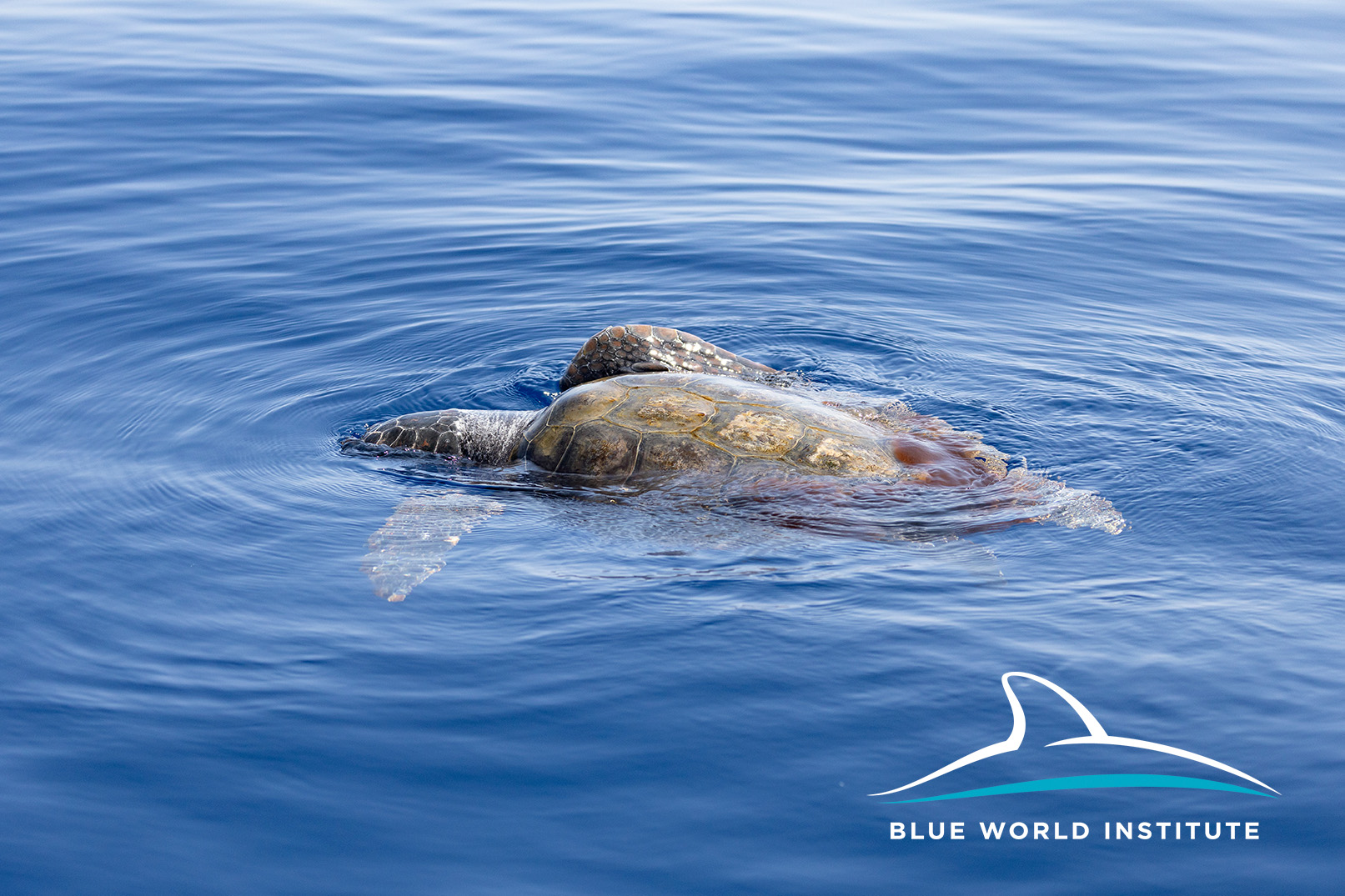
Loggerhead turtle (Caretta caretta)
The Croatian Natural History Museum and the Blue World Institute continue their collaboration and activities in the protection and research of sea turtles in the Adriatic Sea. The LIFE Euroturtles project, funded by the European Union, is one of the largest European projects for the conservation of sea turtles, covering the entire life cycle of loggerhead and green turtles in the Mediterranean. The project was coordinated by the Croatian Natural History Museum and included partners from Italy, Cyprus, Greece, Slovenia, Malta, and the Blue World Institute. Current activities include determining sea turtle abundance in the Adriatic, satellite tracking of individuals, education on reducing the impact of bycatch, and the rehabilitation of sick and injured turtles at the Sea Turtle Rescue Centre in Lošinj.
Since the appearance of nests in the Adriatic is becoming increasingly likely, we invite citizens to watch for possible turtle tracks on sandy beaches during summer. Any tracks you notice (resembling the passage of a small caterpillar tractor) should be photographed and reported with the location so experts can verify whether it is indeed a nest.
Important note: under no circumstances should you dig up or open a nest! If you notice newly hatched turtles on the beach, ensure they have an unobstructed path to the sea, take photos or videos, and report it to us. Perhaps in 15–30 years, they will return to lay eggs on the same beach where they hatched!
Please, report your observations or the discovery of an injured or accidentally caught sea turtle to the Sea Turtle Rescue Centre, Blue World Institute, Kaštel 24, Veli Lošinj, info@blue-world.org or +385 51 604 666 and www.facebook.com/oporavilistezamorskekornjace .

In recent days, the public has been reacting to the...

At the initiative of the Blue World Institute, a meeting...

Dolphin Day 2025 Celebrated on Lošinj with Community, Science, and...

For several weeks now, we have been encountering large flocks...